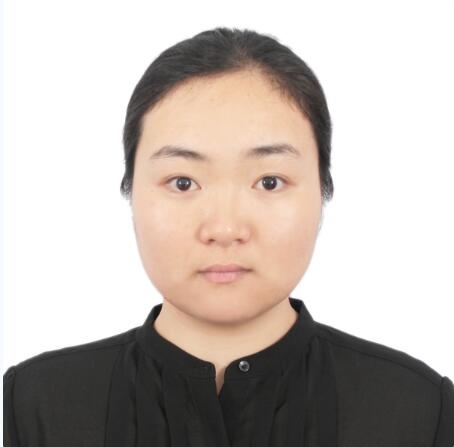
Personal profile:
Master of Science, major in Planetary Science.
Research interests
●Lunar remote sensing
●Visible and near-infrared spectroscopy of the Moon
●Lunar compositions and mineralogy
●Space weathering
Supervisor: Zongcheng Ling
Email/Phone:sunlz9008@gmail.com
Address (room number):University of Hawaii
Professional Title:Graduate Alumni
Working and Education:
Education
School of Space Science and Physics, Shandong University, Weihai, China, 2009-2016
●Master of Science, June 2016
○Thesis: Mineral Distributions in Lunar Crust: Results from Radiative Transfer Modeling of Central Peaks
●Bachelor of Science, June 2013
○Thesis: Lunar Global FeO Mapping Based on Partial Least Squares Modeling
Research experience
●June 2014 - Present: Lunar mineral derivation based on modified Gaussian model and radiative transfer model. Lunar FeO and OMAT derivation based on statistical method.
●May 2012 - June 2014: Global mosaic of Chang’E-1 IIM spectral images. Lunar FeO and OMAT derivation based on Chang’E-1 IIM data and Clementine data.
●May 2011 - April 2012: A comprehensive research of lunar samples returned by Apollo and Luna missions.
Reward received:
●2015; Excellent Research Award, Shandong University, Weihai, China
●2014; National Scholarship for Master Degree Students, China
●2014; Outstanding Student, Shandong University, China
●2013; Excellent Graduate Student Award, Institute of Space Sciences, Shandong University, China
●2011; Scholarship of National Astronomical Observatories, Chinese Academy of Sciences
●2011; Third prize in National English Contest for College Students
●2009-2013; First-class Scholarship for Excellent Students or Second-class Scholarship for Excellent Students every year
●2009-2013; Merit Student Award every year
Publications:
Peer reviewed papers
[1]Sun L., Ling Z., Zhang J., et al., 2016. Lunar iron and optical maturity mapping: Results from partial least squares modeling of Chang'E-1 IIM data. Icarus 280, 183-198, doi:http://dx.doi.org/10.1016/j.icarus.2016.07.010. (SCI)
[2]Ling Z., Li C., Liu J., Zhang J., Li B., Sun L., et al., 2015. Correlated compositional and mineralogical investigations at the Chang’e-3 landing site. Nature Communications 6, 8880, doi: 10.1038/ncomms9880. (SCI)
[3]Chen J., Ling Z., Li B., Zhang J., Sun L., Liu J., 2016. Abundance and distribution of radioelements in lunar terranes: Results of Chang’E-1 gamma ray spectrometer data. Advances in Space Research 57, 919-927, doi:http://dx.doi.org/10.1016/j.asr.2015.11.018. (SCI)
[4]Sun L., Ling Z., Zhang J., Li B., Guo D., 2016. Radiative transfer modeling of lunar mafic minerals: A case study in Chang ' E-3 landing region (in Chinese). Acta Petrologica Sinica 32, 43-52. (SCI)
[5]Li B., Ling Z., Zhang J., Chen J., Sun L., Zhao H., 2016. Geochronology, petrogenesis and geological significance of the lunar basalts around CE-3 landing site (in Chinese). Acta Petrologica Sinica 32, 19-28. (SCI)
[6]Ling Z., Zhang J., Liu J., Li B., Wu Z., Ni Y., Sun L., Chen, J., 2016. Lunar global FeO and TiO2 mapping based on the recalibrated Chang'E-1 IIM dataset (in Chinese). Acta Petrologica Sinica 32, 87-98. (SCI)
[7]Sun L., Ling Z., Zhang J., Li B., Chen J., 2016. The spectral characteristics and remote detection of lunar Mg-spinel: A case study of Tycho Crater (in Chinese). Scientia Sinica Physica, Mechanica & Astronomica 46, 029607.
[8]Chen J., Ling Z., Bo L., Sun L., Zhang J., Liu J., 2016. The distribution of lunar iron revealed by Chang'E-2 gamma ray spectrometer (in Chinese). Scientia Sinica Physica, Mechanica & Astronomica 46, 029605.
[9]Sun L., Ling Z., Liu J., 2014. The spectral characteristics and remote detection of minerals in lunar Orientale Basin (in Chinese). Earth Science Frontiers 21, 188-203. (EI)
[10]Ling Z., Zhang J., Wu Z., Sun L., Liu J., 2013. The compositional distribution and rock types of the Aristarchus region on the Moon (in Chinese). Scientia Sinica Physica Mechanica & Astronomica 43, 535-546. (SCI)
[11]Sun L., Ling Z., Liu J., 2012. An introduction to the curation of Apollo lunar samples (in Chinese). Earth science frontiers 19, 128-136.
Conference proceedings
[12]Sun L., Ling Z., 2015 Partial Least Squares Modeling of Lunar Surface FeO Content with Clementine Ultraviolet-Visible Images. Planetary Exploration and Science: Recent Results and Advances. Springer, pp. 1-20.
Thesis
[13]Sun L., 2016. Mineral Distributions in Lunar Crust: Results from Radiative Transfer Modeling of Central Peaks (in Chinese). M.Sc. thesis, School of Space Science and Physics, Shandong University. 74 pp.
International conference abstracts
[14]L. Z. Sun, Z. C. Ling, J. Zhang, J. Chen, Z. J. Li, J. Z. Liu, 2016. Mineralogical and chemical variations of the lunar crust: Results from radiative transfer modeling of central peaks. 48th Lunar and Planetary Science Conference, #1849, Lunar and Planetary Institute, Houston, U.S.A. (Poster)
[15]Sun L., Ling Z., Zhang J., 2016. Mineralogical Constraints of Basalt Thickness near Chang'e-3 Landing Site. 47th Lunar and Planetary Science Conference, #2400, Lunar and Planetary Institute, Houston, U.S.A. (Poster)
[16]Ling Z., Zhang J., Li B., Sun L., Liu J., 2016. Differentiation of Basaltic Lava at Chang'e-3 Landing Site. 47th Lunar and Planetary Science Conference, #2545, Lunar and Planetary Institute, Houston, U.S.A. (Oral report)
[17]Chen J., Ling Z., Li B., Zhang J., Sun L., Liu C., 2016. Lunar Global Aluminum Map: Results from Chang’e-2 Gamma Ray Spectrometer. 47th Lunar and Planetary Science Conference, #3022, Lunar and Planetary Institute, Houston, U.S.A. (Poster)
[18]Sun L., Ling Z., Zhang J., 2015. Quantifying lunar spinel content with radiative transfer model. The 2nd Beijing international forum on lunar and deep-space exploration, Beijing, China. (Oral report)
[19]Sun L., Ling Z., 2013. Lunar global iron mapping with partial least squares regression. The International Symposium on Planetary Sciences (IAPS2013), Shanghai, China. (Oral report)
[20]Ling Z., Zhang J., Sun L., Wu Z., Liu J, 2013. The potential landing site for future lunar missions: Aristarchus region. The 2nd Beijing international forum on lunar and deep-space exploration, Beijing, China.